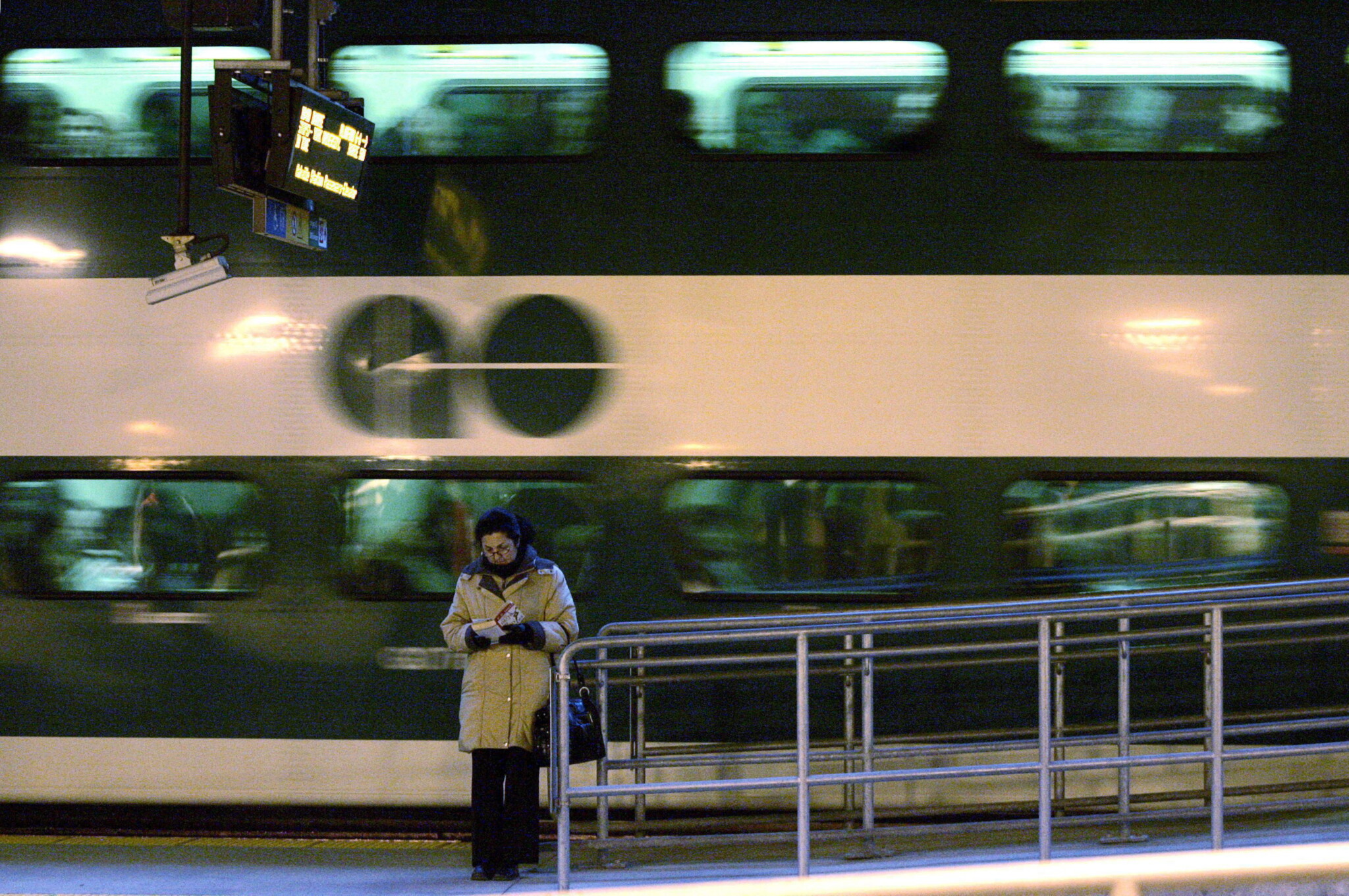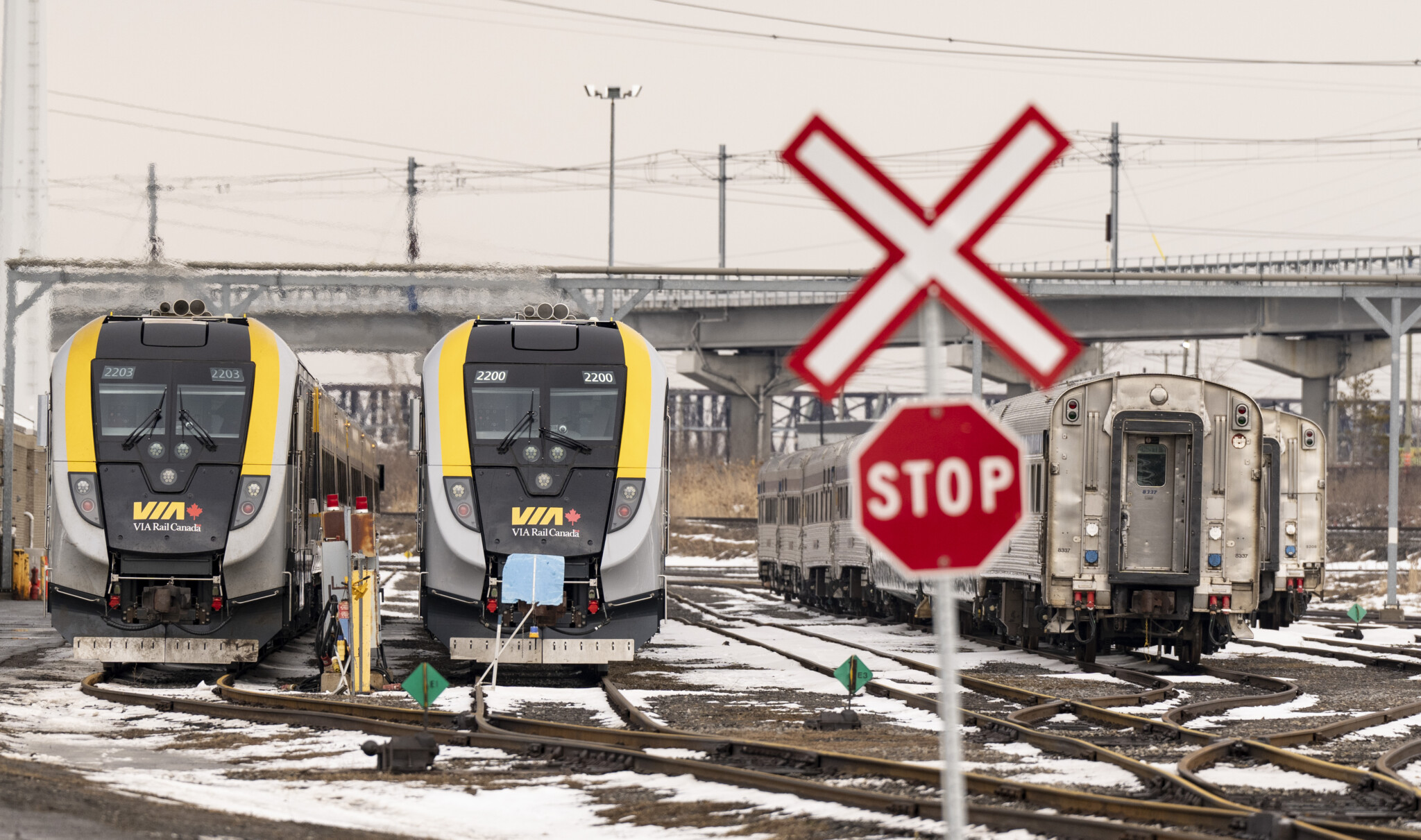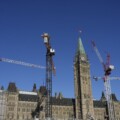Any day now, the Trudeau government is expected to announce the details around a new high-speed rail project connecting Toronto, Ottawa, Montreal, and Quebec City, with trains reaching speeds of 300 km/h. It’s a plan that could fundamentally change the way Canadians in Ontario and Quebec live and work.
However, with latest cost estimates ranging from $80 billion to $120 billion, and transportation projects across the country plagued by delays and cost overruns, concerns persist about whether Canada could successfully build such a landmark project, promised by previous governments. Others wonder if the promise is merely a Liberal government ploy to improve their dwindling poll numbers.
Today, Canada is the only country in the G7 without high-speed rail—defined as trains that travel at least 200 km/h. Some train cars operating in the Quebec City–Windsor corridor date back to 1947, two years after the end of the Second World War.
“At this point, the majority of the G20 have high-speed rail service, and a bunch of countries outside the bloc do as well. Canada is looking more and more like a place that can’t build the big infrastructure other rich democracies can,” said Reece Martin, a transportation consultant and content creator.
The Hub spoke with Leslie Woo, the former chief planning and development officer at Metrolinx now urban planner and CEO of CivicAction, as well as Martin, about how Canada can build high-speed rail in a cost-effective and timely manner.
Trudeau’s high-speed rail aspirations
This October, Radio-Canada reported that the federal government planned to announce a high-speed rail project connecting Toronto, Peterborough, Ottawa, Montreal, Trois-Rivières, and Quebec City. It’s a plan that could mean you could step on a train in Toronto and be in Montreal in just three hours.
The plan marked a shift from a previously announced “high-frequency rail” project, which would have focused on more frequent but still relatively slow service between these cities.
Currently, passenger trains along that corridor can only reach 160 km/h; however, trains often run at slower speeds due to the right of way of freight trains on several sections of the line. High-speed trains would need to run on a new and separate high-speed rail line.
According to Radio-Canada, the federal government is expected to choose one of three bids. The bidders are Cadence, composed of SNC-Lavalin, CDPQ Infra, Systra Canada, Keolis Canada, and Air Canada; Intercity Rail Developers, which includes EllisDon Capital, Kilmer Transportation, First Rail Holdings, Jacobs, Hatch, CIMA+, FirstGroup, RATP Dev Canada, and Renfe Operadora; and QConnexiON Rail Partners, comprising Fengate, John Laing, Bechtel, WSP Canada, and German Rail.
The Hub reached out to the Ministry of Transport, but at the time of publication, the full extent of the plan and a successful bidder has not yet been announced.
$120 billion for a train?
An estimate by Transport Canada suggests that a high-speed rail network could cost up to $80 billion. But Pierre Barrieau, a lecturer in transportation planning at the Université de Montréal and consultant with urban planning firm Gris Orange, thinks the project could reach as high as $120 billion.
A price tag of $120 billion for about 1,000 kilometres (the distance of the previously announced Toronto-Quebec City high-frequency rail project) equates to approximately $120 million per kilometre, significantly more than the cost to build high-speed rail in other countries. For example, France builds high-speed rail at $38 million per kilometre. Spain’s network meanwhile costs approximately $26 million per kilometre.
Martin called the $80–120 billion figure ridiculous arguing that Canada should spend no more than $30–60 billion.
“I think it’s insane that we are putting up these numbers because I don’t think it’s reasonable for it to cost that much,” he said.
Woo noted that good and efficient planning and governance are key ways to reduce costs.
“It’s really important to ask the question, ‘Is the governance and the structures they have in place what’s adding to the cost?’ As opposed to, ‘We chose a technology that was more expensive, or we chose a construction technique that’s more expensive.’ We don’t often ask, ’Is this the process of governing and getting this project to be ready most effective [and] efficient?’”
She added that government process costs can quickly add up.
“All the time before the planning; the approvals, the environmental assessments, all those steps, the more extensive that process is, it’s time, and that time translates to money.”
Martin says another thing that could reduce costs would be for Canada’s political class to be more realistic and less dogmatic.
For high-speed rail, he says that this translates into focusing on Montreal, Ottawa, and Toronto, instead of trying to attach Peterborough and Quebec City to the mix, a decision he says is political.
He instead suggested a train from Toronto to Montreal, which could cost from 30 to 60 billion. He also urged flexibility on speed, noting that if trains that go 320 km/h are going to cost twice as much as 250 km/h ones, it’s not worth the price tag.
While trains like France’s TGV reach speeds of over 300 km/h, the Northeast United States’ Acela Express high-speed train travels at speeds over 240 km/h, servicing Washington, D.C., Baltimore, New York City, Philadelphia, and Boston.
Avoiding delays and cost overruns
Over the last few years, Canadians have watched several major transportation projects come in significantly over budget and be plagued with major delays.
In Toronto, the Eglinton Crosstown light rail system, originally budgeted at $9.1 billion, may now cost taxpayers $12.8 billion. Started in 2011, it was initially set to be completed in 2020, but will now not open until at least 2025.
Similarly, the Ontario Line subway, initially estimated at $10.9 billion, is now expected to cost $27.2 billion. Its completion date was pushed from 2027 to 2031.
In Montreal, the Réseau Express Métropolitain (REM), a suburban metro system, was originally projected to cost $7 billion, but it ended up costing $9.4 billion. Construction began in 2018, but its first phase, scheduled for 2020 instead opened in 2023, while the rest of the network is not expected to be fully operational until 2027.
California’s high-speed rail project should also serve as a cautionary tale for Canada. Initially budgeted at $22.8 billion, the system, intended to link San Francisco, San José, Los Angeles, and Anaheim, is now estimated to cost over $100 billion and remains years behind schedule.
Woo said that in order for our high-speed rail project to not be plagued with endless delays and cost overruns, it must have good stakeholder engagement.
“If people [are] not engaged early on, there’s less alignment. Decisions are put off because either someone’s not at the table or they’re not really in line, so they’re pushing it down, pushing the can down the road. And those things then cumulatively add up to delay, delay, delay.”

A woman reads a book as a GO commuter train pulls away from the platform at Toronto’s Union Station, March 4, 2008. J.P. Moczulski/The Canadian Press.
Like Martin, Woo stressed the need for Canada’s political class to focus on long-term gains over short-term political gains.
“Nation-building, city-building doesn’t happen in four-year cycles. It happens in decades and centuries,” she said. It is important for the project to have a vision and a purpose. For Woo, the purpose of a high-speed rail should be connecting Toronto, Montreal, and Ottawa as major economic and population hubs.
Woo, who worked at Metrolinx during the construction of the Eglinton LRT, noted that it was a lack of clear vision which snowballed into delays and cost overruns, resulting in the system still not being up and running.
“In the case of the very inception of the Eglinton LRT, it went through different changes of government, different leaders, having different points of view of what the goal of that project should be. That dissonance carried forward, meaning that there are certain aspects of the project that didn’t happen or weren’t coordinated up front.”
Just this week, Metrolinx CEO Phil Verster announced he would be stepping down, with the project still incomplete.
Martin agreed that dedication is key. You can’t be starting and stopping while changing designs.
“We have to decide if we really want this, and if we do, we need to go all in. We can’t be halfway into the pool. It shouldn’t take 25 years.”
He said that if the project goes ahead with that clear dedication, there would be no good reason for a high-speed rail project in Canada to be significantly delayed, given the ability of other countries also with complex geography to build projects.
“If you look at other countries, like Spain, they built their first [high speed] line in like eight years. And a lot of countries built their first high-speed rail lines in less than 10 years. And they did it decades ago, when there was a lot less advanced technology, and when high-speed rail was a much more novel technology.”
Potential benefits of high-speed rail
Woo and Martin said high-speed rail could bring significant benefits to Canada, if built properly.
Woo said that “there’s a big economic advantage” as business, including finance, commerce, retail, events, entertainment, and tourism, could all benefit from high-speed rail.
“The nature of work is transforming and a workplace can be many places [and] ease of getting from one place to the other, whether it’s to see clients or to combine work with family and recreation, speed, and frequency of moving around enables those things,” she noted.
Woo also highlighted urbanization trends, noting that 70 per cent of the global population will soon live in cities, creating a need for efficient transportation within and between them.
“[Cities] need to be well connected. We can’t have massive, sprawling communities. Density and how we create more multi-residential, multi-use kind of centres becomes important from an urban planning standpoint.”
Martin pointed to trade, labour, and environmental benefits, saying the project could help Canada achieve its climate targets. He also said high-speed rail presents a unique nation-building opportunity.
“High-speed rail would certainly open up more of the country and allow people to travel around to more of the country. Toronto-Montreal day trips would suddenly become possible…[which] would bring the country together because there’d be more cross-cultural interaction,” he said.
“There’s a huge nation-building argument to be made.”











